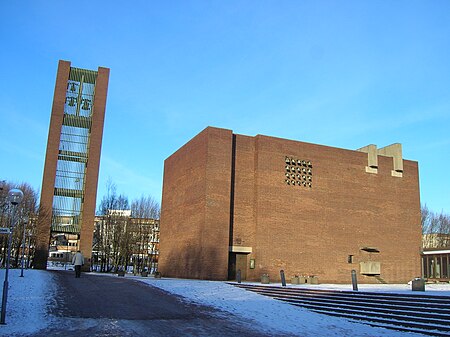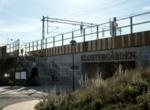Church of the Holy Spirit, Lund
20th-century Church of Sweden church buildings20th-century establishments in Skåne CountyChurches completed in 1968Churches in LundChurches in the Diocese of Lund ... and 1 more
Swedish church stubs

The Church of the Holy Spirit (Swedish: Helgeandskyrkan) is a church located in the district of Klostergården, on the south-west side of Lund in Skåne, Sweden. It was opened in 1968 as a district church in the Diocese of Lund, but became the main church of the parish of Helgeand after it was formed in 1991. The functionalistic church has thick brick walls, a campanile and a pulpit on the exterior designed for outdoor services. It has 23 church bells, of which twenty form a chime of bells and three are located in the campanile. The architect behind the church was Sten Samuelson (1926-2002).
Excerpt from the Wikipedia article Church of the Holy Spirit, Lund (License: CC BY-SA 3.0, Authors, Images).Church of the Holy Spirit, Lund
Nordanväg, Lund Municipality
Geographical coordinates (GPS) Address External links Nearby Places Show on map
Geographical coordinates (GPS)
| Latitude | Longitude |
|---|---|
| N 55.69375 ° | E 13.179166666667 ° |
Address
Helgeandskyrkan
Nordanväg
222 28 Lund Municipality (Söder)
Sweden
Open on Google Maps










